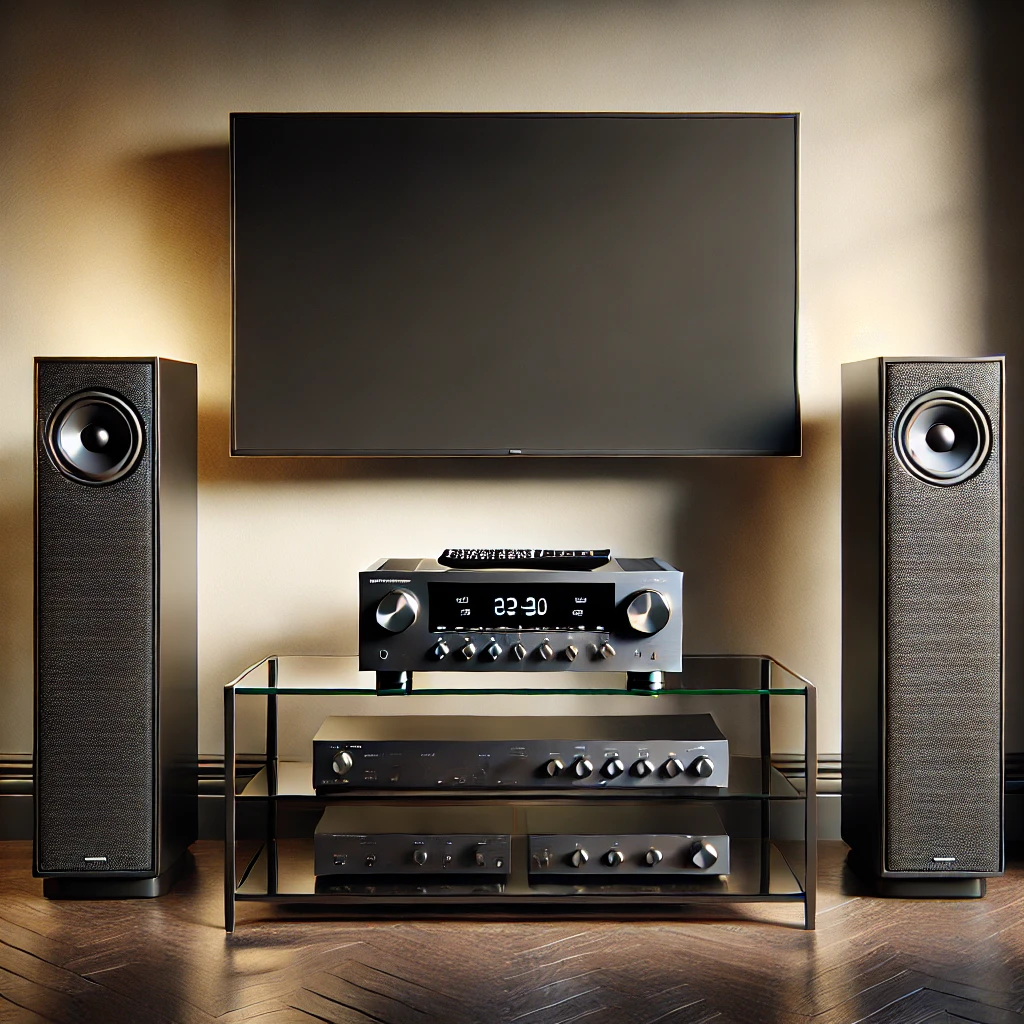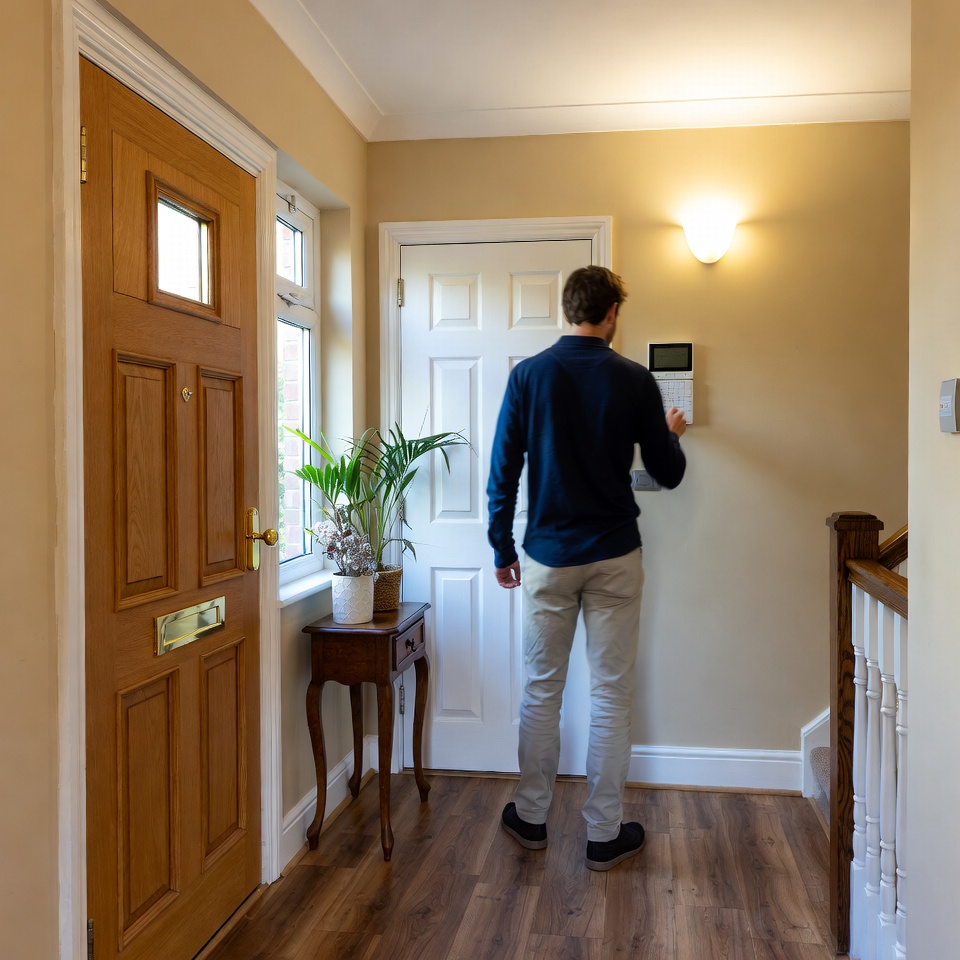Surround sound should feel effortless — you sit down, hit play, and the room fills with rich, immersive audio. But for many UK households, the reality is a bit more frustrating: dialogue that's too quiet, effects that sound off-centre, subwoofers that shake the room but not in a good way, or HDMI ARC that seems to have a mind of its own.
If your system isn't behaving, you're not alone. Modern audio gear is powerful, but it's also finicky. And while there's plenty you can adjust yourself, there are also situations where professional calibration genuinely makes the difference between "sounds OK" and "sounds unbelievable."
Here's why your system might be acting up — and when it's time to bring in a pro.
1. Calibration Issues: When the System Needs More Than Auto-Setup
Nearly every AV receiver these days (Yamaha YPAO, Denon/Marantz Audyssey, Onkyo AccuEQ, Sony DCAC, etc.) includes a built-in auto-calibration tool. These are helpful, but they're not perfect — especially in UK homes with awkward room shapes, bay windows, alcoves, and reflective surfaces.
Common problems we see:
Distances and delays are miscalculated
Auto-calibration mics often struggle with background noise or oddly shaped rooms. It might set your rear speakers 3m away when they're actually 1.8m, creating muddy timing and weak surround effects.
Incorrect crossover settings
Many systems set all speakers to "Large," which sounds impressive on paper but ruins clarity. A pro will set proper crossover points based on speaker size, room acoustics, and listening habits.
Subwoofer phase and gain errors
This is the #1 calibration issue clients ask us to fix. When the sub is incorrectly set, you end up with either boomy bass or nearly silent low-end — both of which completely destroy cinematic impact.
If you've run calibration three times and it still sounds wrong, it's usually the system — not you.
Call a professional when automatic calibration simply can't correct the room.
2. Speaker Placement Problems in UK Homes
Let's be honest: most UK living rooms weren't built with Dolby guidelines in mind.
We regularly see:
- Sofas pushed against the back wall
- TV in a corner rather than centred
- Front speakers blocked by cabinets or fireplaces
- Surrounds placed too high, too low, or too far back
- Subwoofers hidden behind furniture (often the cause of 80% of bass issues!)
Even the difference between placing a speaker 10 degrees too high or one foot too close can ruin surround imaging. And with today's 5.1, 7.1, and Atmos setups, precision matters more than ever.
A professional will assess your room layout, speaker angles, distances, and reflections — and often make changes that instantly transform the audio without buying a single new piece of gear.
If your room layout is awkward or you're unsure where speakers should actually go, that's a perfect time to bring in expert help.
3. HDMI ARC & eARC Setup Complexities
ARC should be simple: one cable from TV to receiver or soundbar.
In reality? It's one of the biggest pain points for UK customers.
Typical ARC/eARC issues include:
- TV not sending surround sound back to the receiver
- Dolby Digital or Atmos not being detected
- Audio cutting out intermittently
- Volume control not syncing
- CEC conflicts (Sky box, Fire TV, PlayStation, Blu-ray player… all fighting for control)
Every brand (Samsung, LG, Sony, Panasonic) handles ARC slightly differently. Add multiple devices into the chain, and suddenly nothing behaves.
A professional knows exactly how to configure ARC/eARC, what settings each device needs, and how to eliminate CEC conflicts that cause dropouts and delays.
If ARC keeps "losing connection" or doesn't output the right format, that's almost always a job for a technician.
4. Audio Sync and Lip-Sync Issues
Few things are more irritating than watching someone speak and hearing their voice half a second later.
Lip-sync problems happen due to:
- TV processing delays
- Wrong audio formats
- Gaming consoles or streaming boxes adding latency
- Soundbar/receiver that isn't compensating properly
- Wireless sub or rear speakers causing additional delay
You can experiment with delay adjustments, but it's trial and error unless you're using professional meters or calibration software.
A home theatre technician can measure latency accurately and apply the right correction so picture and sound lock together perfectly.
If voices never quite line up no matter what you tweak, it's time to call a pro.
5. When DIY Fixes Just Aren't Enough
There's absolutely nothing wrong with trying the basics:
- Re-running auto-calibration
- Checking cables
- Updating firmware
- Making small placement adjustments
- Resetting ARC
- Testing different audio formats
But here's the truth:
Modern home theatre systems are complex enough that DIY only gets you so far.
Professional calibration involves:
- Precision audio measurement tools
- Room acoustic analysis
- Manual channel-by-channel adjustment
- Correct phase alignment
- Optimised crossover settings
- HDMI chain troubleshooting
- Real-world listening tests tailored to the client's room
It's the difference between "good enough" and "Wow — was my system always capable of this?"
When It's Time to Call in a Professional
You should reach out for expert help when:
- Surround effects sound weak or unbalanced
- Dialogue is too low even at high volume
- Bass is boomy, muddy, or inconsistent
- ARC/eARC keeps disconnecting or losing formats
- Your room layout is causing acoustic problems
- You've tried calibration multiple times without improvement
- Multiple devices aren't playing nicely together
- Lip-sync issues won't go away
If you're fed up with fighting your audio gear and just want it to work properly, a trained technician can sort it quickly, professionally, and without the trial-and-error frustration.
Ready for Perfect Surround Sound?
If you're in Manchester or the surrounding areas and want your system calibrated, repaired, or set up properly, get in touch. Whether it's a minor ARC update or a full 7.1 tune-up, we'll make sure your home theatre finally performs the way it should.
Book a Professional Calibration
